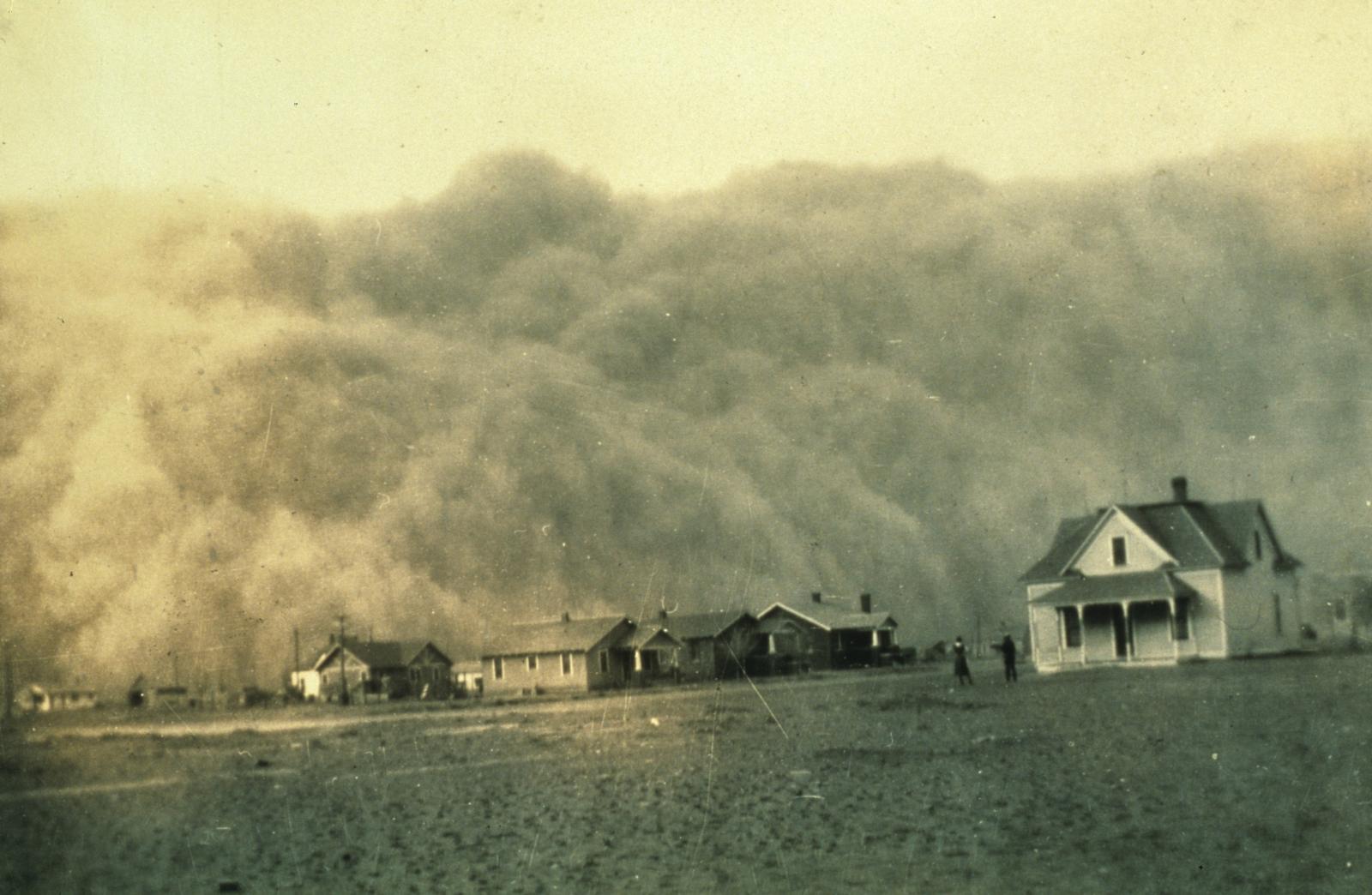Under conditions of climate change, desertification, sand and dust storms (Sand and dust storms, SDS) is a major concern for desert and semi-arid regions, vast areas that cover about 45-47% of the global Earth’s surface and are home to unique biodiversity. In addition to their significant impact on ecosystems, these storms affect food security and human well-being and health. Let’s see what it is.
Sand and dust storms are wind-induced erosion events of surface materials, also transmitted over large distances and typically associated with dryland areas. Sand and dust, which is predominantly quartz or silica, can contain significant amounts of aluminum, iron oxide, chlorine, sulfur and other chemical compounds.
The largest areas of high dust storm activity are found in the desert regions of the Northern Hemisphere. The desert is known as the largest dust-producing region in the world. In this wind dance—which varies in frequency and intensity—pathogenic microorganisms can also fluctuate including bacteria, fungi, viruses, and harmful elements such as pollutants and allergens.
Dust bowl crisis
The Dust Bowl is symbolic, one of the largest environmental crises in US history. It took place during the 1930s on the Great Plains, an area stretching from Texas to Montana. As a result of a combination of factors, including intensive cultivation of land, drought and storms, this huge concentration of dust gave rise to the so-called Black blizzard, black storms following each other with increasing frequency. Many people were forced to migrate to cities, as the dust destroyed crops, homes, plants, farming equipment, and even caused damage and injury to animals and humans, penetrating into the eyes and respiratory system.
Not too far back in time, huge walls of sand have also recently risen in the United States: in early September 2022, a storm 80.5 kilometers wide and 1.8 kilometers high struck Arizona. The speed of sand and dust winds reached 105 km / h, which blew strongly in the air and severely limited visibility. During the passage of this large orange cloud, which blocked traffic for hours, more than 11,000 power outages were recorded.
Although arid regions – with limited vegetation – are more susceptible to SDS, dust from storms can be carried by winds up to hundreds of thousands of kilometres. Although it is not a phenomenon comparable to that of semi-arid or desert regions, even the skies of Italy, for example, can be swallowed up by sand, most of which comes from the Sahara desert and is driven by an intense influx of khamsin.
Sand is harmful to sustainable development, but also to health
The Intergovernmental Panel on Climate Change (IPCC), in the second report of its sixth session, dedicated to Impacts, vulnerabilities and adaptation, to what extent desertification and SDS represent an obstacle to the sustainable development of affected countries and the well-being of their populations, with important social and economic ramifications for food production systems, infrastructures, transportation and health. Long-term effects include loss of ecosystem services, biodiversity and habitat, chronic health problems, erosion and, consequently, reduced soil quality.
But what are the main consequences of SDS sheets for human health? Exposure to large amounts of sand particles can cause or aggravate coughing, skin diseases, irritate the eyes and airways or exacerbate pre-existing asthma and bronchitis, and – in more severe cases – lead to emphysema, lung disease and chronic obstructive pulmonary disease. (chronic obstructive pulmonary disease).
On the other hand, inhalation of dust – and therefore from its biological, chemical and physical properties – can cause respiratory diseases such as silicosis, cardiovascular diseases, as well as viral, bacterial and fungal infections. It is the size of the particles that determines whether the dust will settle in the lungs or in the lung tissue. Obviously, the smaller the mineral powders, the easier it is to inhale them. If fine particles can enter the lungs, ultrafine particles can also reach the bloodstream, even affecting children’s cognitive function in the event of prenatal exposure.
Moreover, the effect of extremely fine particles on the arteries and circulatory system can contribute to the buildup of cholesterol plaques and the formation of blood clots. This may increase the risk of cardiovascular diseases such as heart attack and stroke.
Not all people are exposed to these risks in the same way and not all of these symptoms can appear at the same time, but children, the elderly, and people with pre-existing cardiopulmonary problems are at greater risk of seeing the starting condition get worse.
A global battle against desertification in which the United Nations is involved, as is the case for climate and biodiversity
In addition to negative impacts on human health and interference with air and land transportation systems, SDS can also cause serious damage to the environment, from crops to wildlife, creating challenges for biodiversity and ecosystems. Fighting these phenomena requires a global commitment, which in fact goes back to the historic Rio de Janeiro summit in 1992 that also launched the fight against climate change and the reduction of biodiversity. In fact, the third convention drawn up on that occasion is the United Nations Convention to Combat Desertification (UNCCD – United Nations Convention to Combat Desertification in Those Countries Experiencing Serious Drought and / or Desertification, Particularly in Africa), adopted in 17 June 1994 in Paris and Signed by 115 countries, including Italy. Like climate and biodiversity, periodic Conferences of Parties on desertification are held. in 2022 COP15which brought together representatives from around the world to address issues related to preventing and combating desertification, drought, dust and sand storms and promoting sustainable land management practices.
It is estimated that conditions of increasing aridity and drought (their frequency, intensity and duration) will lead to an increase in intense sand and dust storms and the length of their stay in the atmosphere: depending on weather conditions and particle size, dust will remain in the atmosphere from a few hours to more than ten days. Moreover, desertification, unsustainable land use and the effects of climate change along with human activities are expected to accelerate soil erosion and biomass loss. These manifestations will become more apparent in the coming decades, with global consequences.
Especially if we consider that SDS also works in the long term, it is necessary to implement mitigation and adaptation strategies. Among them: promoting sustainable agricultural practices, preventing soil degradation, preserving vegetation, educating the population on safety practices that must be followed, and developing early warning systems that provide information and improve knowledge on this phenomenon, known to all as derivation Arab love.

“Infuriatingly humble social media buff. Twitter advocate. Writer. Internet nerd.”


